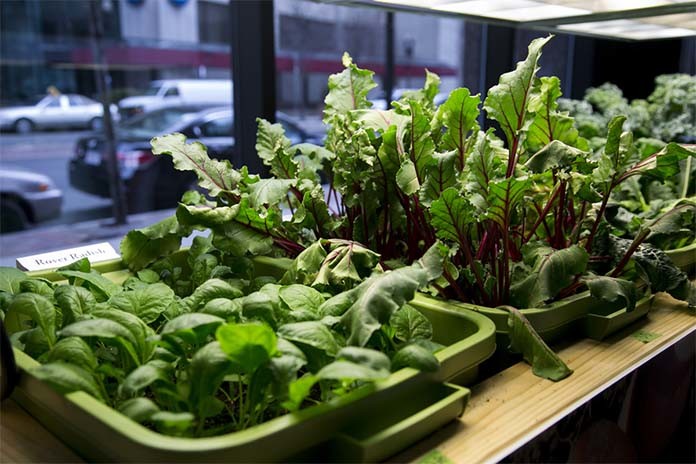
Indoor Vegetable Garden – Do you often dream of having a garden but shrug off your ideas because you think there isn’t enough space? A lot of us erroneously believe that we need to hassle with extra space to grow a vegetable garden. However, this isn’t true at all! A lot of vegetables can be grown indoors.
Related: 13 Gardening Tips You Should Follow but No.10 is Stunning.
And you can have your very own indoor vegetable garden without much maintenance. This will give you the ultimate opportunity to stay healthier.Locally-grown produce will help you embrace farm fresh foods, and it is better for the environment.
So, go ahead and use these ideas for growing vegetables indoors.
Contents
Know the ideal indoor vegetable garden styles.
In general, there are two popular styles of indoor vegetable gardening.
- Hydroponic/aquaponics gardening – It is water based and grows a large number of plants in small space constraints. They need no soil, such as asparagus, Brussel sprouts, artichokes, etc.
- Container Gardening – It is the simplest and the most common method of gardening indoors. It requires a series of containers/pot/planters, which use the traditional methods of gardening and can help in growing plants like potatoes, squashes, etc.
Related: A Beginners Guide to Container Gardening.
Choosing the right space
The success of an indoor vegetable garden relies heavily on the selection of the space i.e. where it is setup. You can choose an area with ample sunlight or choose a place with no sunlight depending on the vegetable you are growing.
For instance, mushrooms can be grown straightforward in a dark cupboard whereas tomatoes and eggplants may need to be placed near a windowsill for adequate sunlight.
Controlling the environment
The best thing about growing vegetables indoors is that you can control the environmental conditions. These are some simple tips for controlling the same.
- Soil Heat Mats – Generally, soil temperatures between 75–85 °F are ideal for most plants. So, you wouldn’t want to have very high (during summers) or very low (during winters) temperatures disturb the optimal growth of your plants. Electric mats for heating pots and containers can solve this issue.
- Drip System – Regularly watering each of the plants in your indoor vegetable garden can be a hassle but getting a drip system is a solution. Consisting of a series of small tubes, drip system timely waters the plant on regular intervals. You can control them with electronic devices.
- Lighting system – Windows do a fairly good job in providing access to sunlight to the growing vegetables indoors, but depending on your vegetables, you may need fluorescent lights or no lights at all.
Choosing Your Plants
When it comes to the indoor vegetable garden, you have to choose a plant wisely. Not all of the vegetables can grow indoors. But don’t worry! A diverse range of plants can easily thrive indoors.
For instance, tomatoes can be grown in hanging baskets, whereas globe variety radishes can be grown in pots. Potatoes can be planted in large containers and mushrooms are great for draft-free, dark spaces.
Dwarf French beans can be easily sown in pots during late winter and run well indoors. You should pick their pods when they are young- as they are juicier and much tender then.
Making and Using Containers
If you want something eco-friendly and affordable, then buying new planters or containers each time for growing your indoor vegetable garden isn’t a smart option. So, try using DIY containers through yogurt cups, newspapers, broken jugs, etc.
You can use big yogurt containers that are at least 3 inches deep for planting small plants and herbs such as oreganos. Plus, newspapers can be folded around thick dowels to create makeshift planters. They are biodegradable and perfect for transferring plants.
Remember to clean older containers for bacteria and worms before reuse.
So, start planting now!
Also Read: Top 10 Indoor Gardening Tips You Must Try
Gardening is Good For Your Health! How?
